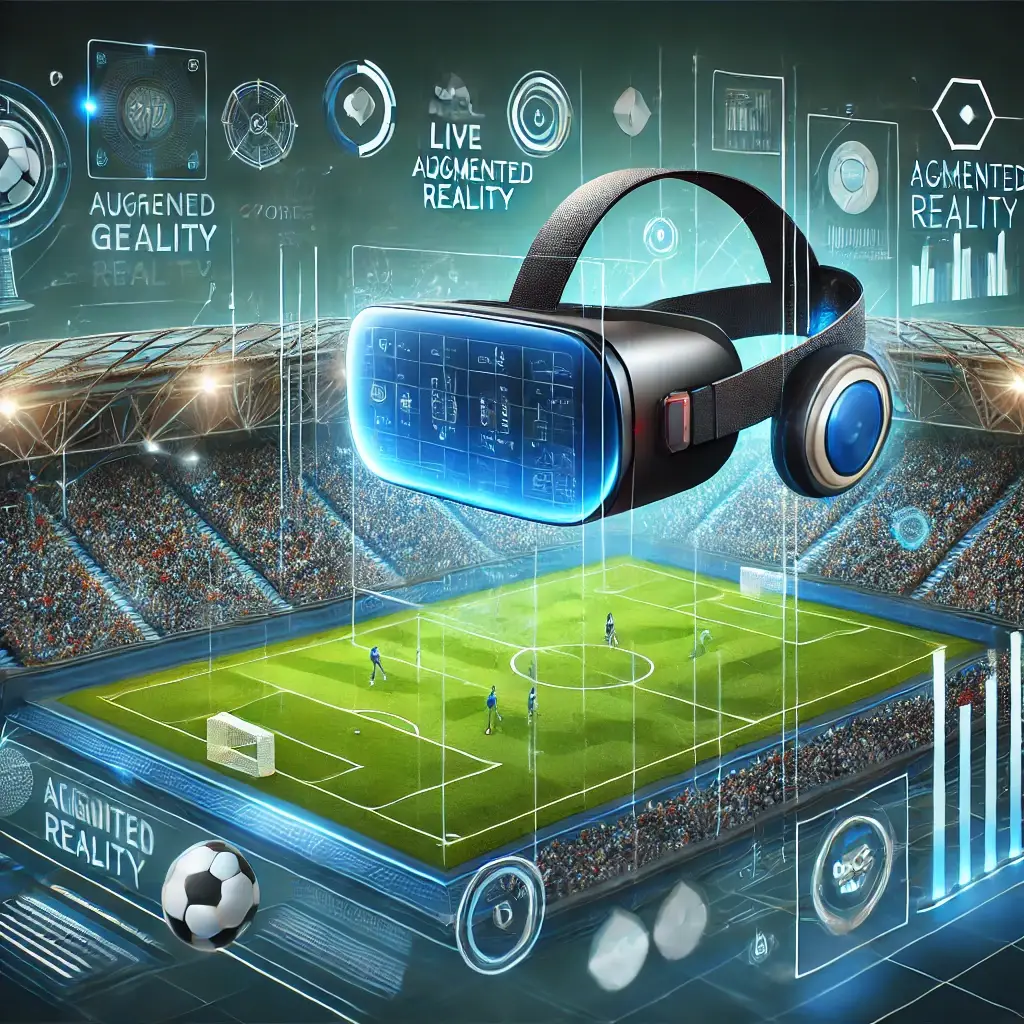Introduction:
The sports industry is undergoing a major transformation, and augmented reality (AR) is at the forefront of this revolution. From enhancing the fan experience to improving athletic training, AR is providing new ways to engage with sports. But where will this technology take us in the future? In this post, we’ll explore the exciting potential of AR in sports, backed by global figures and industry trends, and look at how this emerging technology is set to shape the future.
How AR is Changing the Game in Sports
Augmented reality has already made its mark in the world of sports. From interactive fan experiences to cutting-edge training tools, AR allows us to interact with sports in ways we never imagined. Here’s a brief look at how AR has already impacted the sports industry:
• Real-Time Stats and Overlays: Fans attending live events or watching from home can use AR apps to overlay real-time stats, player details, and live game data.
• Athlete Training: Coaches and athletes use AR to create virtual training environments, allowing athletes to simulate game scenarios and improve reaction times.
The Growth of the AR Sports Market
The global AR market is growing rapidly, and the sports industry is a key sector within that growth. According to MarketsandMarkets, the global augmented reality market was valued at $14.7 billion in 2020 and is projected to reach a staggering $88.4 billion by 2026. Much of this growth will come from industries such as entertainment, including sports.
In terms of the AR sports market, the integration of AR into sports broadcasting, fan experiences, and training is projected to grow significantly over the next decade. By 2028, the global AR in sports market is expected to be worth over $9 billion, driven by increasing demand for immersive viewing experiences and virtual training solutions.
Emerging AR Technologies for Sports
The future of AR in sports will be defined by several key technological advancements that are currently in development or being refined:
• Advanced Wearable Devices: Future AR devices will likely become more compact, with AR glasses and smart contact lenses offering more immersive experiences without the need for bulky headsets. This will open the door to real-time player stats, virtual fan interaction, and even in-game AR experiences.
• AI and 3D Mapping Integration: Combining AR with artificial intelligence (AI) will enable smarter, more dynamic sports experiences. AI can analyze in-game data and provide tailored AR overlays based on real-time performance. 3D mapping will also improve, allowing AR apps to create hyper-accurate representations of stadiums or training grounds.
• AR in Broadcasting: In the future, AR will completely change how we watch sports. Broadcasters are already experimenting with AR to show real-time data on screen, and it’s expected that in the coming years, AR sports broadcasts will become standard. Viewers will be able to customize their viewing experience by choosing what stats and data they want to see overlaid on their screens.
AR Sport Games and Their Role in the Future
While we’ve already discussed AR sport games in detail in previous posts, it’s worth mentioning how AR sport games will play a crucial role in shaping the future of both entertainment and physical fitness. Games like HADO, an AR-based dodgeball game, showcase the potential for creating new sports that merge physical movement with digital gameplay.
In the coming years, we may see the rise of fully immersive AR sports leagues, where players compete in both the physical and digital realms. The potential for global virtual competitions in AR sports is immense, allowing athletes to compete from different parts of the world in real time.
The Impact of AR on Fan Engagement
Fan engagement is another area where AR will have a profound effect. In the future, fans attending live games will have access to customized AR experiences, such as holographic replays, interactive stat overlays, and the ability to virtually interact with their favorite players. This will create a deeper level of involvement and excitement for fans, both at the stadium and at home.
Key Figures:
• According to Statista, the global market for AR sports fan experiences is projected to grow by $6.5 billion by 2025, driven by the increasing demand for immersive and personalized sports content.
• The NFL and NBA are already pioneers in using AR to enhance fan engagement, with apps allowing fans to experience live games in AR from the comfort of their homes.
Challenges for AR in Sports
While the future of AR in sports is promising, there are several challenges that need to be addressed before we see full-scale adoption:
• High Costs: Developing and implementing AR technology, particularly for live sports events, is expensive. As the technology matures and becomes more affordable, we can expect broader adoption across sports leagues and teams.
• User Adoption: While younger generations are generally more open to AR experiences, some fans and athletes may resist the transition to AR-enhanced sports. Teams and companies will need to ensure that the technology remains user-friendly and accessible.
• Privacy and Data Concerns: As AR becomes more prevalent, concerns over data privacy and the ethical use of player and fan data will need to be addressed. Striking the right balance between innovation and security will be crucial.
Conclusion: What’s Next for AR in Sports?
The future of augmented reality in sports is bright, with limitless potential for creating new games, enhancing training, and immersing fans in the action. As AR technology continues to evolve, we can expect to see it play an even greater role in shaping how we experience sports. From virtual competitions to AI-driven training, AR is set to revolutionize the industry.
Are you ready to experience the future of sports with AR? Stay tuned to our blog for the latest updates on AR in sports and emerging technologies.




